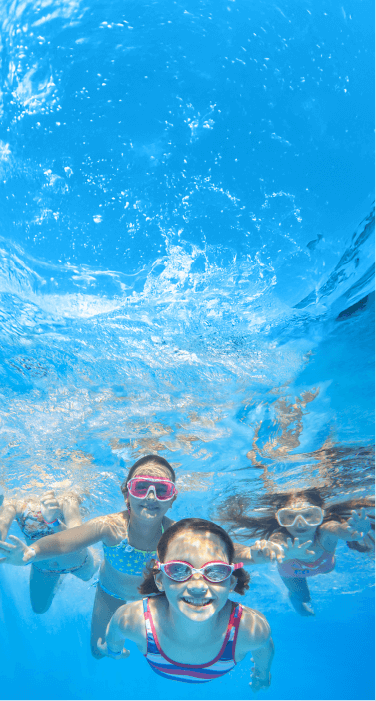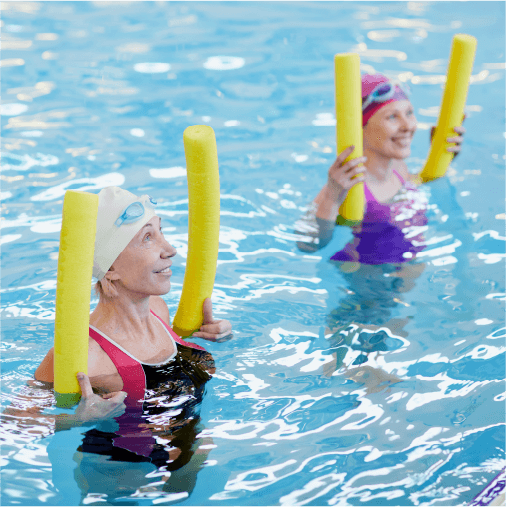

Learn to swim
programme
Which Programme is right for you?
selecting the appropriate level for your children
Harry Wright International's Learn To Swim Programme is a progressive program which ensures swimmers learn to swim in a safe, positive and structured environment. All levels are divided by the ability level of swimmers to ensure progression. Our instructors follow a modern curricula which ensures safety, establishes goals and attainment tasks, this brings consistency to the program. Once students have met the attainment tasks of the level, they may proceed to a higher ability level.

Level
Beginner 1 (Non-Swimmer)
For non-swimmers aged 5 years and above
40 minutes
≤ 4 Students
This stage provides an introduction to swimming lessons for school-aged children who cannot swim. The primary aim is to build self-confidence and introduce basic skills such as floating, gliding, and fundamental water skills. Children will progress to the primary skills needed for freestyle and backstroke, focusing on body position, strong kicking action, and efficient arm movements. Basic safety aspects of entering and exiting the pool are included, aiming to create a relaxed and confident swimmer who can begin to learn the fundamentals of recognised swimming strokes.
Beginner 1
Depending on ability
40 minutes
≤ 4 Students
This stage, for children who have already gained some swimming ability, builds self-confidence and introduces basic skills like floating, gliding, and fundamental water skills. Children develop primary skills in freestyle and backstroke with a focus on body position, strong kicking action, and arm movements, ensuring a relaxed, confident swimmer able to begin learning the fundamentals of recognised strokes.
Beginner 1 Advanced
Depending on ability
40 minutes
≤ 7 Students
At this level, the aim is to master the coordination of freestyle and backstroke while building on previous skills. Children learn correct body and head positions and water safety skills to build overall confidence. The goal is to swim 10 metres of freestyle, maintaining good technique (strong flutter kick, lifting arms over, exhaling in the water, and turning head to breathe) and swim 10 metres of backstroke with proper body position, strong kick, and straight arm movement.
Beginner 2
Depending on ability
40 minutes
≤ 8 Students
The main aim is to develop swimmers' endurance to 20 metres (2 widths) while maintaining good techniques. Coaches emphasise constant vigilance of each child's technique, introducing a more advanced understanding of stroke techniques, such as lifting the arm by the elbow on freestyle and ensuring correct hand positions entering the water. Strong kicking movements and the fundamentals of diving safely from the kneeling position, maintaining a streamlined position underwater, are introduced.
Beginner 2 Advanced
Depending on ability
40 minutes
≤ 9 Students
This stage focuses on developing endurance over longer distances (4 widths) while maintaining good stroke technique in freestyle and backstroke. The fundamentals of breaststroke are introduced, emphasising the correct kicking technique. Children learn to turn their feet out and kick back correctly with a ‘whip kick’ action. Breaststroke pull, coordination, and timing of the stroke are introduced until a basic technique can be maintained over 20 metres (2 widths). Diving techniques from the kneeling position are refined.
Beginner 3
Depending on ability
40 minutes
≤ 10 Students
Skills and stroke techniques from previous stages are further refined and developed over distance. Correct techniques of breaststroke are crucial before children progress to swimming lengths. The aim is for children to swim 6-8 widths continuously, maintaining correct stroke technique in freestyle, backstroke, and breaststroke. Diving techniques advance until children can safely dive from a crouch position.
Beginner 4
Depending on ability
60 minutes
≤ 16 Students
This is the first stage conducted with the coach on the pool deck, swimming over lengths in a ‘lane’. Basic ‘lane’ swimming discipline, along with ‘streamlined’ starts and correct finishes at the wall for each stroke, are introduced. Stroke techniques are refined, and advanced techniques and drills develop endurance and more efficient propulsion. The standing dive is introduced and developed. Once strokes can be maintained over 50 metres or 2 lengths continuously, progression to the improver level is possible.
Improver
Depending on ability
60 minutes
≤ 16 Students
This stage focuses on maintaining and building on all learned techniques, allowing children to swim 100 metres of freestyle, backstroke, and breaststroke with minimal deterioration of stroke technique. The first stages of learning butterfly are introduced, beginning with a strong ‘dolphin’ kick movement. Butterfly arm movements are introduced and practised over short distances until the stroke can be maintained over 25 metres. Diving develops into a ‘competitive start’ with a streamlined position in the water.
The Improver level is conducted with 2 or more lanes catering to different abilities, offering progression within this stage.


Swimming Equipment
for Young Learners
Support your child’s swimming journey with appropriate gear from Streamline Sports, our recommended partner for quality swimwear and accessories. Visit their Learn To Swim Collection for everything needed for lesson success. Enter code “HARRYWRIGHT” at checkout to receive 10% off your first order on all items with Streamline Sports.























